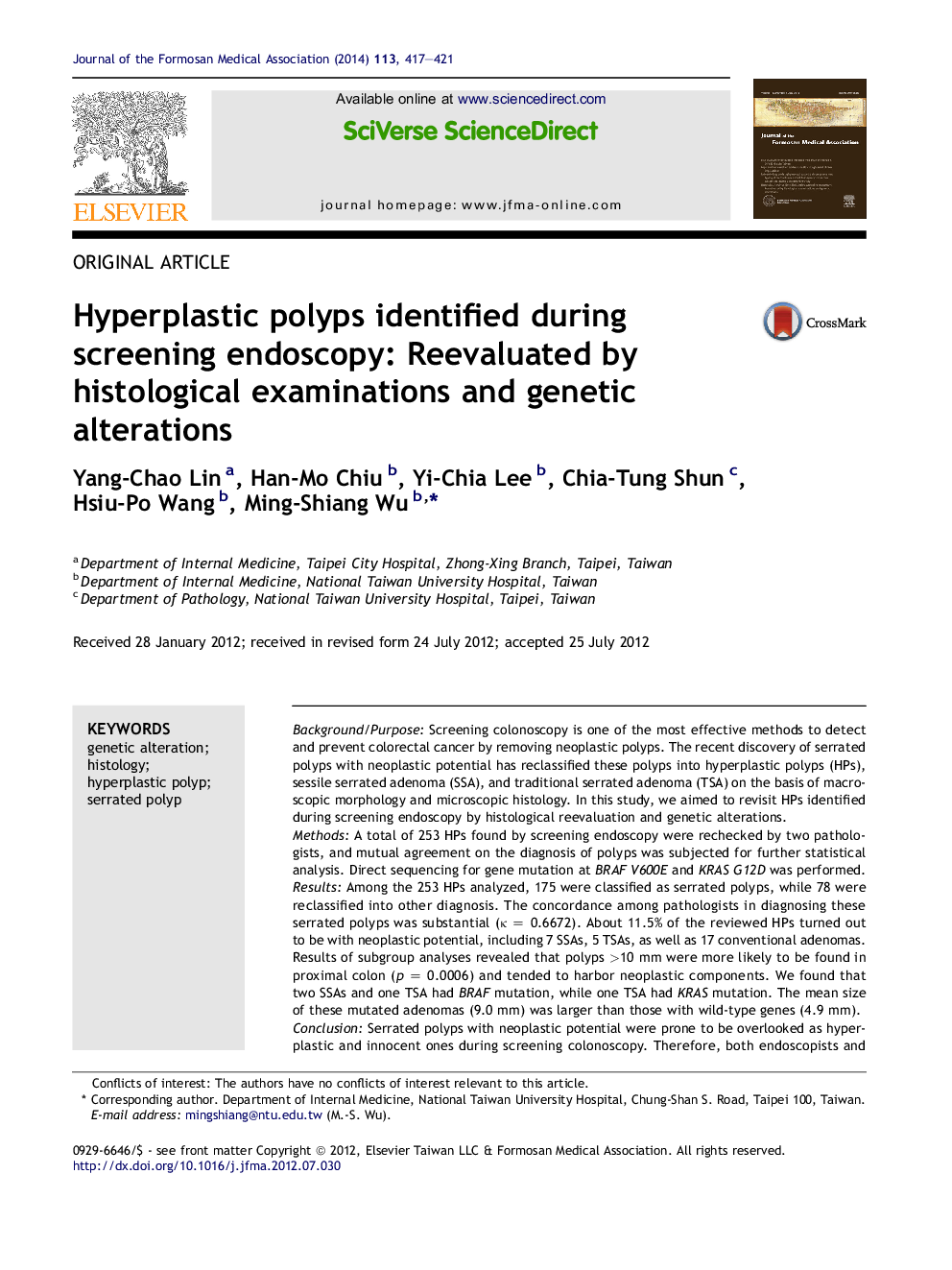| Article ID | Journal | Published Year | Pages | File Type |
|---|---|---|---|---|
| 3478846 | Journal of the Formosan Medical Association | 2014 | 5 Pages |
Background/PurposeScreening colonoscopy is one of the most effective methods to detect and prevent colorectal cancer by removing neoplastic polyps. The recent discovery of serrated polyps with neoplastic potential has reclassified these polyps into hyperplastic polyps (HPs), sessile serrated adenoma (SSA), and traditional serrated adenoma (TSA) on the basis of macroscopic morphology and microscopic histology. In this study, we aimed to revisit HPs identified during screening endoscopy by histological reevaluation and genetic alterations.MethodsA total of 253 HPs found by screening endoscopy were rechecked by two pathologists, and mutual agreement on the diagnosis of polyps was subjected for further statistical analysis. Direct sequencing for gene mutation at BRAF V600E and KRAS G12D was performed.ResultsAmong the 253 HPs analyzed, 175 were classified as serrated polyps, while 78 were reclassified into other diagnosis. The concordance among pathologists in diagnosing these serrated polyps was substantial (κ = 0.6672). About 11.5% of the reviewed HPs turned out to be with neoplastic potential, including 7 SSAs, 5 TSAs, as well as 17 conventional adenomas. Results of subgroup analyses revealed that polyps >10 mm were more likely to be found in proximal colon (p = 0.0006) and tended to harbor neoplastic components. We found that two SSAs and one TSA had BRAF mutation, while one TSA had KRAS mutation. The mean size of these mutated adenomas (9.0 mm) was larger than those with wild-type genes (4.9 mm).ConclusionSerrated polyps with neoplastic potential were prone to be overlooked as hyperplastic and innocent ones during screening colonoscopy. Therefore, both endoscopists and pathologists should pay attention to understand the importance of recognizing serrated adenomas, especially for those polyps >10 mm, or those that are located in the proximal colon.
